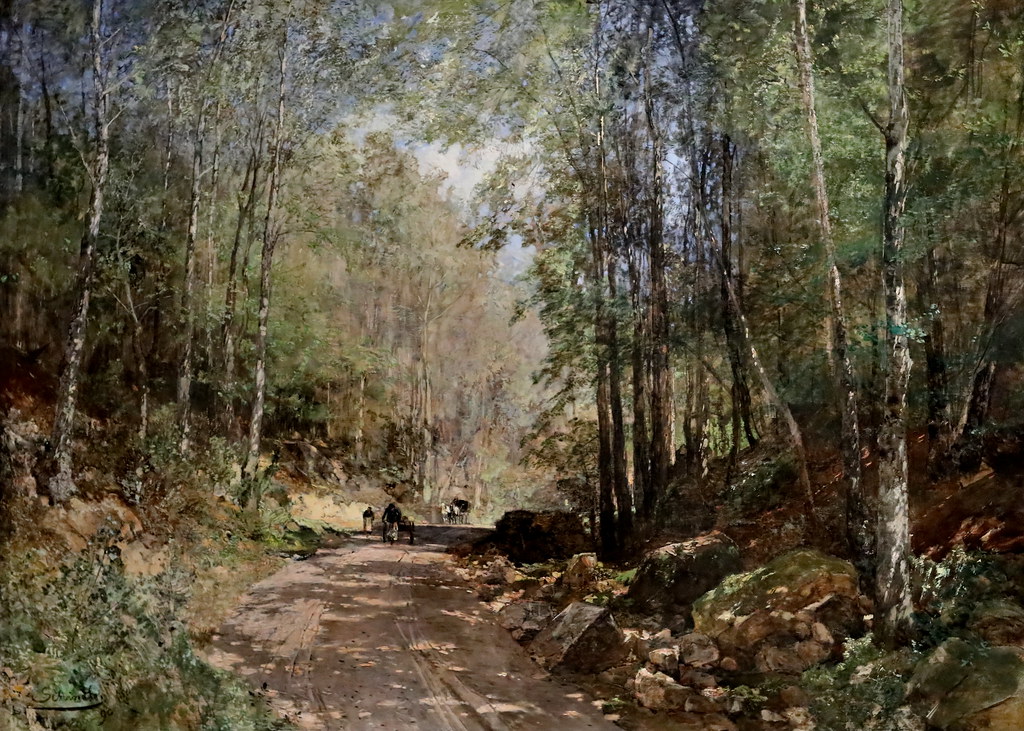The Impressionist movement revolutionized the world of art in the late 19th century, introducing a fresh approach that focused on capturing the transient effects of light and color. Their vibrant and lively paintings were made possible by a range of materials carefully selected to achieve their desired effects. From pigments to brushes, the Impressionists were meticulous in their choices. Let’s delve into the world of the Impressionists’ palette and explore the materials they used most!
The Impressionists’ Palette: Unveiling Their Vibrant Materials!
1. Pigments: A Kaleidoscope of Colors
Pigments were essential to the Impressionists, as they allowed them to create a wide array of vibrant hues. These artists favored bright, intense colors, often opting for newly available synthetic pigments. Brilliant yellows, blues, and greens became staples of their palette, enabling them to capture the fleeting effects of light and atmospheric conditions.
2. Oil Paints: The Medium of Choice
Oil paints were the preferred medium of the Impressionists due to their versatility and ability to create rich, textured surfaces. The artists would mix their chosen pigments with linseed oil, a binder that provided a smooth consistency and allowed for easy application. Oil paints gave the Impressionists the freedom to experiment and blend colors directly on the canvas.
3. Brushes: Strokes of Brilliance
The Impressionists employed a variety of brushes to achieve different effects in their paintings. From soft, sable brushes for delicate details to stiffer bristle brushes for more expressive strokes, their brush selection was crucial in capturing the essence of their subjects. Brushes with longer handles also allowed the artists to keep a distance from the canvas, enabling them to step back and observe their work from different angles.
4. Palette Knives: Adding Texture and Depth
Palette knives played a significant role in the Impressionists’ technique, allowing them to add texture and depth to their paintings. By applying thick layers of paint with a palette knife, they could create impasto effects that added a three-dimensional quality to their work. This technique also added a sense of movement and energy to the brushstrokes.
5. Canvas: A Blank Slate for Artistic Expression
Impressionist painters preferred canvas as their surface of choice. The texture and flexibility of canvas allowed for the application of thick impasto layers, as well as subtle glazes and transparent washes. The artists often worked en plein air, capturing the beauty of nature directly on the canvas and embracing the imperfections and irregularities of the surface.
6. Easels: Mobile Studios
Impressionists valued the freedom to paint outdoors and capture the ever-changing light and colors of their surroundings. Portable easels became essential tools for these artists, allowing them to set up their canvases wherever inspiration struck. These easels were lightweight and collapsible, enabling the artists to paint en plein air with ease.
7. Solvents: Shaping the Consistency
Solvents such as turpentine and mineral spirits were used by the Impressionists to thin their paints and control their consistency. These solvents allowed for the creation of transparent glazes and washes, adding depth and luminosity to their paintings. Additionally, solvents were used for cleaning brushes and tools, ensuring the artists had a clean palette to work with.
8. Varnishes: Preserving the Brilliance
Varnishes were applied by the Impressionists as a final touch to protect their paintings and enhance the vibrancy of the colors. These clear coatings not only added a glossy finish but also prevented dust and dirt from settling on the surface. By using varnishes, the Impressionists ensured the longevity and preservation of their masterpieces.
9. Watercolor: Experimenting with Transparency
Although oil paintings dominated the Impressionists’ body of work, watercolors also played a significant role in their artistic exploration. Watercolor allowed for quick studies and capturing fleeting moments, enabling the artists to experiment with transparency and create delicate washes. These studies often served as references for their larger oil paintings.
10. Sketchbooks: Capturing the Essence
Impressionist artists carried sketchbooks with them, allowing them to quickly capture their observations and impressions. These sketches served as a visual diary, providing a valuable reference for future paintings. Whether it was a fleeting moment or a particular color combination, sketchbooks were the artists’ way of documenting their inspiration on the go.
The Impressionists’ use of materials brought their vibrant artworks to life, capturing the beauty of nature and the essence of the moment. From a kaleidoscope of pigments to the careful choice of brushes and tools, these artists meticulously selected their materials to achieve their artistic vision. The bold use of colors and textured brushstrokes defined the Impressionist style, forever changing the art world. The legacy of the Impressionists continues to inspire artists today, reminding us of the power of color, light, and the materials that shape our creative expressions.








